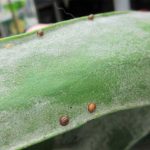 A small peltate scarious disc;
A small peltate scarious disc;
Reduced leaf, usually sessile and scarious and seldom green;
Cone scale, one of the overlapping structures (reduced leaves) on the cone or fruit of a gymnosperm;
Nectary scale, outgrowth of carpel in flowers where nectar is produced (especially in Crassulaceae);
A thin, dry, membranous body, commonly glabrous, resembling the scales of a fish or reptile.
A fine, memberanous arrangement; A little more or less triangular leaf; a chaff-like bract; a flattened hair.
Small bracteate rudiments of leaves, or bodies of that nature (as on the base of the stem).
A small peltate disc, formed of a reduced leaf or an expanded hair. Also used for the parts of a cone of a gymnosperm and the degree of magnification in illustrations.
A structure that is not leaf-like, being papery, brownish or whitish, often± transparent.
A system of measurement or valuation based on a series of marks or levels with regular intervals between them.
Flake of dead epidermis shed from the surface of the skin. v. to remove tartar or other encrusted material from the surface of a tooth.
A graduated or proportioned measure, a series of tests, or an instrument for measuring quantities or for rating some individual intelligence characteristics.
A small dry flake, shed from the upper layers of skin. Some shedding of skin is normal; scale increases in diseases like pityriasis rosea, psoriasis, and tinea pedis and after scratching the skin.
A thin, dry structure, usually a modified or degenerate leaf.
Any thin dry or oily plate of epidermal flakes. An example is abnormal or excessive dandruff.
